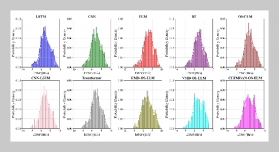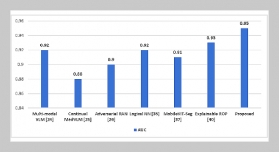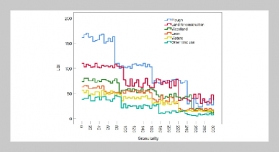REFERENCES
- [1] Fu, F.L.,Su, R.C.and Yu,S.C.,“EgameFlow:aScale to Measure Learners’Enjoyment of E-Learning Games,” Computers & Education, Vol. 52, No. 1, pp. 101�112 (2009). doi: 10.1016/j.compedu.2008.07.004
- [2] Dale, E., Audiovisual Methods in Teaching, Hinsdale, IL: The Dryden Press (1969).
- [3] Connolly, T. M., Boyle, E. A., MacArthur, E., Hainey, T. and Boyle, J. M., “A Systematic Literature Review of Empirical Evidence on Computer Games and Serious Games,” Computers & Education, Vol. 59, No. 2, pp. 661�686 (2012).
- [4] Boyle, E., Connolly, T. M. and Hainey, T., “The Role of Psychology in Understanding the Impact of Computer Games,” Entertainment Computing, Vol. 2, No. 2, pp. 69�74 (2011). doi: 10.1016/j.entcom.2010.12. 002
- [5] Boyle, E. A., Hainey, T., Connolly, T. M., Gray, G., Earp, J., Ott, M., Lim, T., Ninaus, M., Ribeirof, C. and Pereiraf, J., “An Update to the Systematic Literature Review of EmpiricalEvidence of the Impactsand Outcomesof ComputerGamesand Serious Games,”Computers & Education, Vol. 94, pp. 178�192 (2016). doi: 10.1016/j.compedu.2015.11.003
- [6] Jonassen, D. H., Peck, K. C. and Wilson, B. G., Learning with Technology in the Classroom: a Constructivist Perspective, New York: Merrill/Prentice-Hall (1999).
- [7] Chou, C. H., Chu, Y. L. and Chen, H. J., “A Mandarin Phonetic-symbol Communication Aid Developed on Tablet Computers for Children with High-functioning Autism,”Journal of Applied Science and Engineering, Vol. 20, No. 2, pp. 251�258 (2017). doi: 10.6180/jase. 2017.20.2.13
- [8] Chen, C. H., Su, C. C., Lee, P. Y. and Wu, F. G., “Augmented Interface for Children Chinese Learning,” Seventh IEEE International Conference on Advanced Learning Technologies, pp. 268�270 (2007). doi: 10. 1109/ICALT.2007.76
- [9] LearningMandarinPhoneticSymbol(ChineseVersion) [Online] Available: https://itunes.apple.com/tw/app/ kuai-le-xue-zhu-yin-free/id326275513?l=zh&mt=8.
- [10] Match BoPoMo (Chinese Version) [Online] Available: https://itunes.apple.com/tw/app/match-bopomo-litefor-iphone/id499475010?l=zh&mt=8.
- [11] Stowell, J. R., “Use of Clickers vs. Mobile Devices for Classroom Polling,” Computers & Education, Vol. 82, No. c, pp. 329�334 (2015). doi: 10.1016/j.compedu. 2014.12.008
- [12] Schneider, B., Wallace, J., Blikstein, P. and Pea, R., “Preparing for Future Learning with a Tangible User Interface: the Case of Neuroscience,” IEEE Trans. on Learning Technologies, Vol. 6, No. 2, pp. 117�128 (2013). doi: 10.1109/TLT.2013.15
- [13] Xu, D., Tangible User Interface for Children: an Overview, Department of Computing, University of Central Lancashire, Preston, UK (2006).
- [14] Shaer, O. and Hornecker, E., “Tangible User Interfaces: Past, Present, and Future Directions,” Foundations and Trends in Human-Computer Interaction, Vol. 3, No. 1–2, pp. 1�137 (2010). doi: 10.1561/1100000026
- [15] Markova, M. S., Wilson, S. and Stumpf, S., “Tangible User Interfaces for Learning,” International Journal of Technology Enhanced Learning, Vol. 4, No. 3/4, pp. 139�155 (2012). doi: 10.1504/IJTEL.2012.051578
- [16] Girouard, A., Solovey, E. T., Hirshfield, L. M., Ecott, S., Shaer, O. and Jacob, R. J. K., “SmartBlocks: a Tangible Mathematical Manipulative,” Proceedings of the 1st International Conference on Tangible and Embedded Interaction, pp. 183�186 (2007). doi: 10.1145/ 1226969.1227007
- [17] Farr, W., Yuill, N. and Raffle, H., “Social Benefits of a Tangible User Interface for Children with Autistic Spectrum Conditions,” Autism, Vol. 14, No. 3, pp. 237�252 (2010). doi: 10.1177/1362361310363280
- [18] Merrill, D., Kalanithi, J. and Maes, P., “Siftables: Towards Sensor Network User Interfaces,” Proceedings of the 1st International Conference on Tangible and Embedded Interaction, pp. 75�78 (2007).
- [19] Waranusast, R., Bang-ngoen, A. and Thipakorn, J., “Interactive Tangible User Interfacefor Music Learning,” 28th International Conference on Image and Vision Computing, pp. 400�405 (2013). doi: 10.1109/ IVCNZ.2013.6727048
- [20] Raymaekers, L., Vermeulen, J., Luyten, K. and Coninx, K., “Game of Tones: Learning to Play Songs on a Piano Using Projected Instructions and Games,” CHI 2014, pp. 411�414 (2014). doi: 10.1145/2559206. 2574799
- [21] Operating video of iBlock [Online] Available: https:// youtu.be/MXB7YD9Vr_o
















